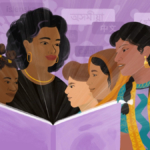
Big IT firms’ use of accessibility features has altered the digital world, empowering impaired people and fostering inclusion. This article investigates how major technology businesses have accepted handicapped people via the development of new solutions and inclusive design principles. By emphasizing accessibility, these firms enable people with disabilities to explore and interact with technology, opening up new possibilities and closing the digital gap.
As a core concept, big IT businesses have realized the need for inclusive design. They recognize that accessibility should not be an afterthought, but rather an essential element of the design process. Companies may guarantee that their goods and services are usable and accessible to a diverse range of users, including people with disabilities, by using inclusive design techniques.
Assistive Technologies: Enhancing User Experience
The advancement of assistive technology has changed the game for impaired people. From screen readers and speech recognition software to adaptable controllers and assistive applications, these advancements have given people with disabilities new ways to connect with digital platforms. Large technology businesses have been critical in encouraging the development and integration of assistive technologies into their products, making them more accessible and user-friendly.
Keep Reading
Web accessibility, mobile app accessibility, and device compatibility are all examples of digital accessibility concerns. Big IT businesses have made tremendous advances in digital accessibility by adhering to industry standards, offering accessibility features, and undertaking rigorous testing to assure compatibility across many platforms and devices. These initiatives have improved disabled users’ access to information, interaction with online services, and participation in the digital economy.
In order to create solutions that fulfill their demands, it is critical to include impaired people in product development processes. Disabled people have been actively participating in usability testing, feedback sessions, and focus groups at large software businesses, enabling them to contribute ideas and viewpoints that inspire product innovations. This strategy guarantees that technological solutions are created with a wide range of consumers in mind, resulting in more intuitive and accessible products.
Big IT corporations have embraced their role as corporate citizens by including accessibility into their CSR programs. They have acknowledged the social effect of their goods and services and are dedicated to making accessibility a moral commitment as well as a legal need. These corporations are generating good change and building a more inclusive society by actively interacting with disability advocacy groups and supporting accessible projects.


























